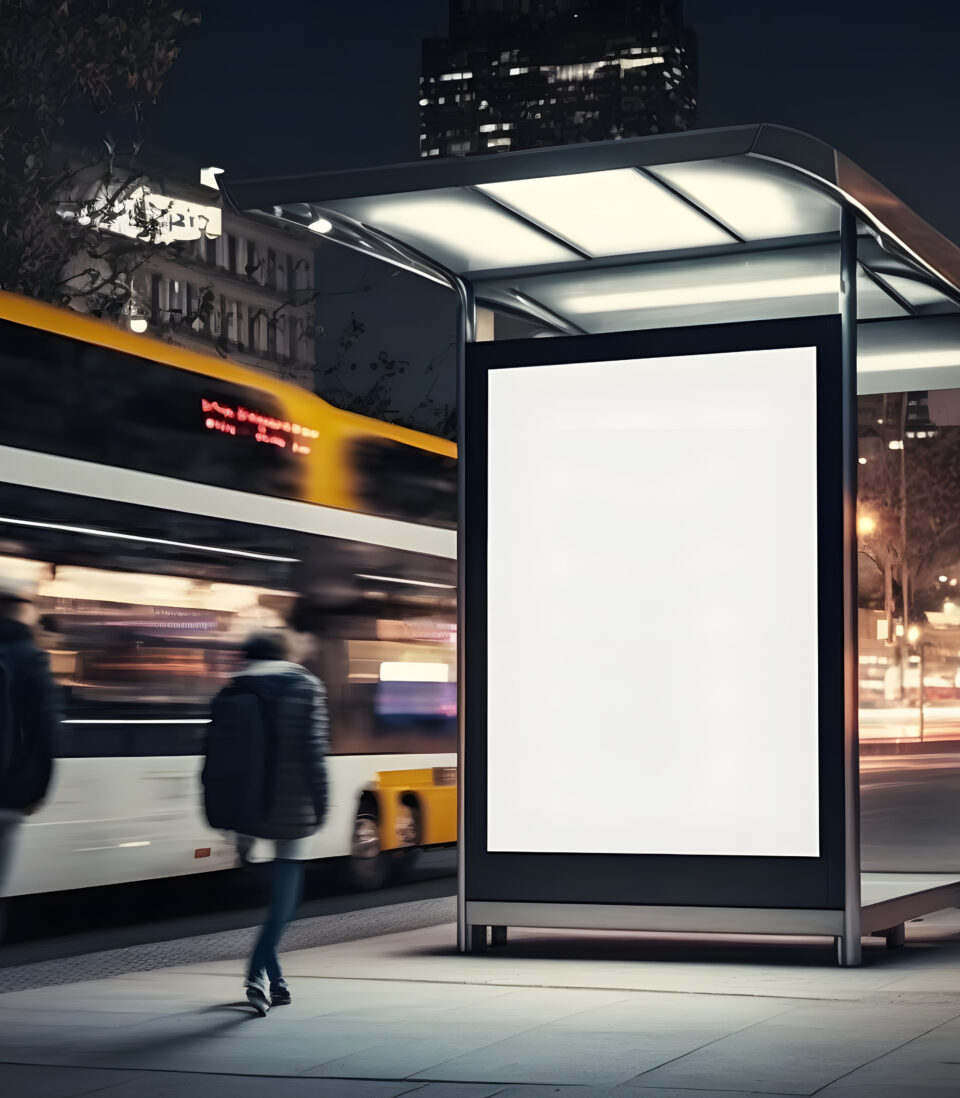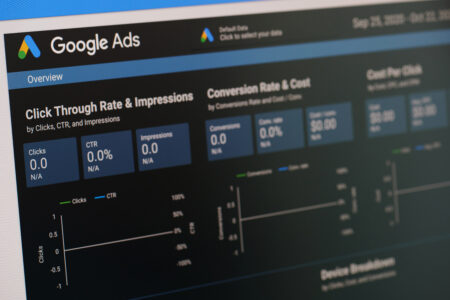For brands looking to make a big impact, DOOH, or Digital Out of Home, offers a unique opportunity to engage with audiences in ways that traditional media simply can’t match.
As an agency specialising in innovative marketing strategies, we believe that running a DOOH campaign in 2025 and beyond will be one of the most effective ways for brands to boost their visibility, engage with consumers, and drive results.
What does Digital Out Of Home mean exactly?
Digital Out of Home is like the modern version of billboards. It’s the ads you see on digital screens in places like bus stops, shopping centres, or train stations. These screens can show changing messages, react to the time of day, or even interact with people nearby.
DOOH in today’s marketing landscape
The landscape of DOOH has changed dramatically over the last few years, driven by advances in technology, data analytics, and creative capabilities. What was once a static billboard, or a simple digital screen is now a dynamic, interactive medium that can be tailored to a brand’s specific objectives.
Thanks to the rise of programmatic DOOH, brands can now buy ad space in real time, target specific audiences based on location, time of day, and even weather conditions, all while tracking the effectiveness of their campaigns.
Gone are the days when DOOH was simply about large, digital billboards in busy areas. Today, DOOH is about reaching people in a variety of environments, including urban panels, retail spaces, office buildings, airports, and even on taxis and buses. Whether it’s a big city centre or a remote location, brands now have more opportunities than ever to place their messages right in front of their target audiences.
The advantages of DOOH
One of the key advantages of DOOH is its ability to target specific audiences with precision. With advancements in data collection and AI-driven insights, brands can deliver hyper-targeted ads based on demographics, behaviour, and even real-time context.
Imagine walking past a digital screen in a shopping centre and seeing an ad for a sale at your favourite clothes shop. Through data analytics, we can now serve tailored messages that resonate with consumers at the exact moment they’re most likely to engage.
This level of targeting was once only achievable with digital platforms like social media and search engines. But with DOOH, the game has changed. Brands can utilise advanced technologies like hyperlocal targeting and geofencing to deliver more personalised content in real time.
The advantages of DOOH
Measuring the success of a DOOH campaign has historically been a challenge, but that’s not the case anymore. With the advancements in digital technology, brands now have access to a wealth of metrics and data that allow to track and optimise campaigns in real time. From foot traffic data and dwell times to audience demographics and brand recall, you can measure the direct impact of your campaign and adjust strategies to drive maximum effectiveness.
What’s more, with the integration of mobile tracking and programmatic buying, we can analyse how digital OOH interacts with other digital channels, providing a comprehensive view of the entire customer journey. This data-driven approach ensures that you get the most out of your advertising spend, with insights that show the ROI of your campaign.
What will DOOH look like in 2025?
- AI and Automation: DOOH will become increasingly automated, with AI-powered algorithms predicting the most effective times and locations for ad placements, as well as customising messages based on audience behaviour.
- Greater Interactivity: Expect more interactive DOOH experiences, where consumers can engage directly with ads through mobile devices, gestures, or even voice recognition.
- Integration with Augmented Reality (AR): AR will create immersive, branded experiences that blur the lines between the digital and physical worlds, allowing consumers to interact with products in new and exciting ways.
- More Hyperlocal Targeting: With improvements in geofencing and location-based targeting, DOOH will offer even more granular targeting, allowing brands to reach their audiences with pinpoint accuracy.
- Sustainability: As environmental concerns continue to rise, brands will increasingly focus on eco-friendly advertising strategies. Expect to see more energy-efficient screens and sustainable materials used in DOOH placements.
As we look to 2025, the potential for DOOH to transform the way brands connect with audiences is limitless.
So, if you’re ready to take your brand to the next level and harness the power of DOOH, now is the perfect time to start planning your campaign with us.
Let's collaborate
Partner with us
Let’s work together to create smarter, more effective solutions for your business.
Related blogs
Who we are
Explore how our culture and expertise fuel digital innovation
Join us








